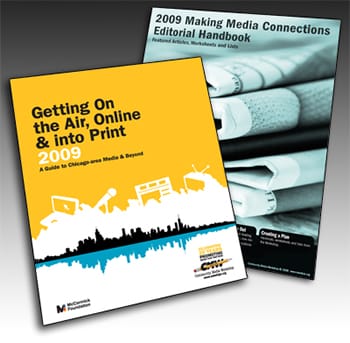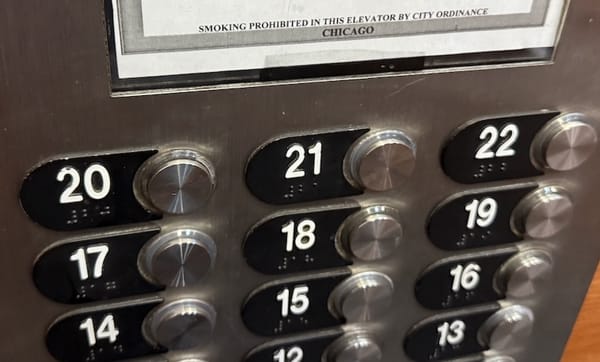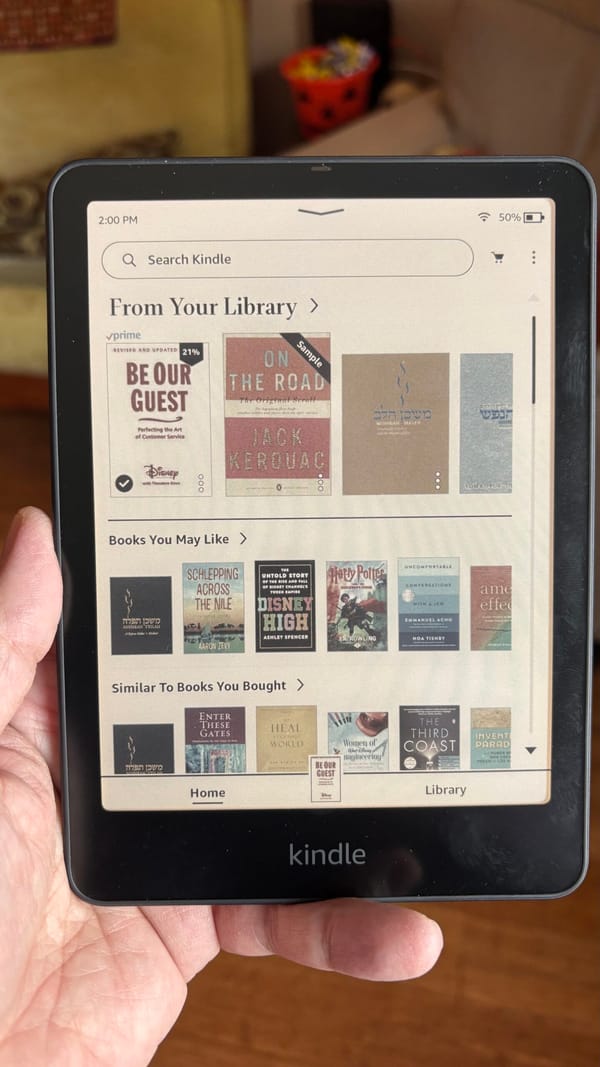Guidebook for a Media Meltdown
This month, Community Media Workshop releases the 18th edition of its annual media guide, 'Getting On the Air, Online & into Print'. Long the undisputed bible of Chicagoland news media contacts, if you're a nonprofit communications manager or public-relations specialist working anywhere near the sou

The media world as we know it has imploded in the past year, nowhere with a louder thud than right here in Chicago. Multiple bloodlettings at local print and broadcast outlets, not the least of which at the Chicago Tribune, have left the industry begging for mercy.
It's into this maelstrom that Community Media Workshop, Chicago's grassroots media-relations training shop (one of the few in the nation), this month releases the 18th edition of its annual media guide, Getting On the Air, Online & into Print. Long the undisputed bible of Chicagoland news media contacts, if you're a nonprofit communications manager or public-relations specialist working anywhere near the southwest shore of Lake Michigan, chances are you've got one of these spiral-bound tomes on a nearby shelf.
As you might expect in a reference guide of reporter emails and phone numbers, given the sector's ongoing volleys of layoffs, mainstream media contacts in this year's book have grown a bit thin. Yet oddly enough, the guide is larger than it has ever been in 18 years of publication.
Part of the reason for that heft is an editorial section of best practices and guidance that has grown steadily in the past few years, most especially during the past three years of support from the journalism-based McCormick Foundation. I'm guilty of helping the section grow, too, having penned articles for the 2008 and 2009 editions (this year on page 20 I counsel newbie nonprofits to maintain friendly working relationship with all reporters––no matter how much they think the media is out to get them.)
Recently I sought out Workshop vice-president Gordon Mayer and asked him to explain the media guide's origins, recent growth, and continued relevance for nonprofit communicators.
MIKE DOYLE: You publish what has become the ubiquitous resource for media contacts in Chicago. When you launched the guide two decades ago, did you have any idea how successful it would become?
GORDON MAYER: Back then, nonprofits had two choices: look everything up themselves; or follow the lead of corporations and spend thousands of dollars on lists created by others. [Workshop co-founder and president] Thom Clark recognized the need for a one-stop-shopping information resource for nonprofit communicators to level the playing field for those without means, namely nonprofits and community organizations. We were––and still are––one of the few places businesses that promotes connections between like-minded organizations and journalists. But the first guide was only 30 pages, a far cry from this year's 300-page edition.
It's been almost 20 years since then––have your efforts to level that playing field been successful?
In a big way. Our workshop participants regularly tell us about how they use what they learn here to generate media coverage. This year, we surveyed 825 of the people who attended our trainings or purchased our media guide, most of whom were nonprofit professionals. More than half of those who responded said we helped them improve the way they tell their organizational stories on the Internet, 37 percent said they applied the communications fundamentals they learned here directly into their everyday work activities, and one out of five of them reported landing major media stories, including making front page news. That's major.
We're also well aware the annual media guide is used far beyond the 1,000 or so copies we sell to the local nonprofit community. We know the book sits on shelves in the Mayor's office and at just about every public relations firm in town.
This year's media guide is the largest ever, even though there's been significant shrinkage in Chicago's news sector. What accounts for the book's recent growth?
There are two reasons: this year we endeavored to offer a truly comprehensive list of ethnic media; and we're also put together our biggest editorial section ever. Retrenchment in the news industry and the rise of web-based multimedia communications tools have really complicated things for nonprofit communicators. More than ever, this year the editorial section offers a wide variety of guidance on traditional and new media topics from experts in both areas.
While we've always tried to list as many ethnic media outlets as possible, this year the McCormick foundation, a key sponsor for the media guide since 2005, underwrote a landmark study of Chicagoland ethnic media. Previously, an all-inclusive cataloging of such media simply didn't exist. We did the research, which is ongoing, and put the results into this year's media guide. With McCormick's help we're also developing an online database of ethnic media.
Were you surprised at what you found?
We found notable not only at the great scope of local ethnic media, but also its distribution. You might think Spanish-language media would be Chicago's largest ethnic media category because it's the most visible. Actually we found Polish-language media outlets to be more numerous, but they're less visible because the community isn't as vocal.
Do you think the continuing retrenchment of mainstream media will make it harder for nonprofits to get their messages before the public?
I worry a lot about the loss of metro media. It's really important that there be a metropolitan agenda and traditionally it's been local news media that have set it by identifying the most important issues of the day. As their role shrinks, it becomes more important for nonprofits to learn how to amplify their own voices and tell their own stories beyond mainstream media.
What is Community Media Workshop doing to help nonprofits adapt to the new media landscape?
Training and more training. The media guide is our largest single method of outreach--it consumes about a seventh of our annual budget. This year for the first time we're breaking out the editorial section and making it available separately to organizations in need of guidance but that may not want to purchase the entire book. Next year we'll be exploring making it available as a digital download.
Beyond the guide, we continue to offer a regular program of workshops and tailored on- and off-site trainings to develop nonprofit staff into skilled communicators, offer a lot of advice and networking options on our various websites, and organize our annual Making Media Connections conference.
As traditional media continues to shrink, what role do you foresee for electronic media like the Huffington Post and community bloggers to take up the slack?
It's not an "either/or" question. With the retrenchment, nonprofits have to be more responsible for getting the word out themselves versus trying to get mainstream coverage. We see a lot of enthusiasm among nonprofit folks in that regard, whether they're telling their stories on their own websites, using social media tools, making a streaming video, or pitching the blogosphere. It's the rise of a nonprofit Web 2.0 community.
But it does blur the line between storytelling and news, and that makes it crucial for there to remain a news industry with some distance from the subjects that they cover and the integrity to identify what's newsworthy and what isn't. The two need to go together.
It sounds like you have your work cut out for you.
It's always been the Workshop's mission to forge linkages between traditional news reporters and citizen journalists. Frankly, with the ongoing crunching together of the two communities, we feel like it's a good time to be us.




